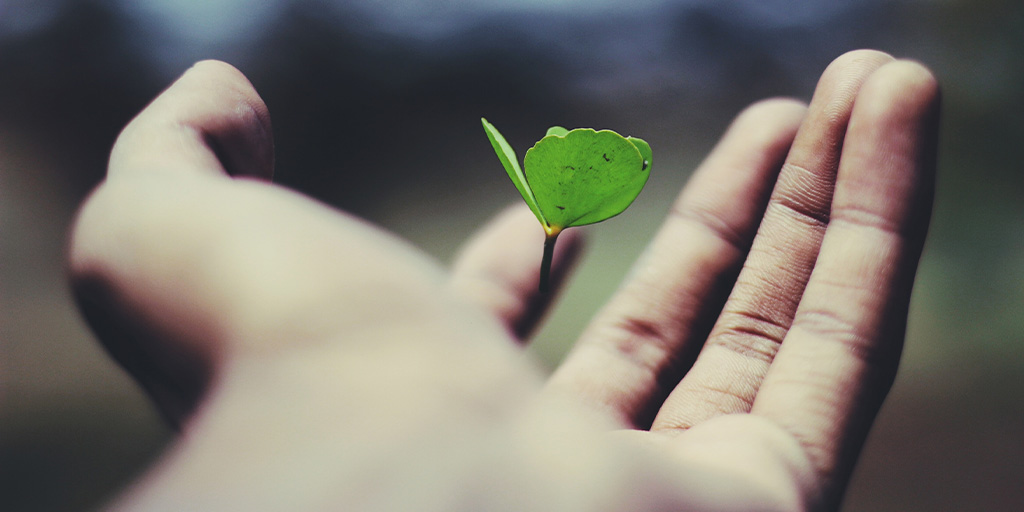Nature-Inspired Sustainability
by Maya Vaccaro (yet2 intern) and Emma Chapelhow (yet2 Project Leader)
Often, when looking to the world around us for inspiration, we find that nature has already laid the groundwork. Mimicking or harnessing biological processes is integral for the innovation of new technologies. Seeking out bio-based solutions opens the possibilities for renewable, clean, and safe to use products.
yet2 has found clients are investing more time and resources to discover new, exciting, and sustainable innovations.
Examples include:
- Lignin, a structural element in plants, can be used as a starting material for biofuel production, a feedstock to create biopolymers, and serve as an alternative to asphalt.
- Collagen, a protein found in skin, cartilage, bones, and connective tissue, can be harvested from waste meat/fishing materials.
- Fungi have been used in manufacturing leather alternatives, food packaging, and as an inspiration for piezoelectric energy generators.
- Algae is being used to produce biopolymers, as an anti-fungal crop treatment, and to generate biofuel
Below are a few exciting technologies yet2 has come across during our research.
Packaging
yet2 conducts dozens of scouting projects a year on new packaging technologies and innovations. Our clients are seeking new sustainable packaging materials such as coatings, films, barriers, and more. Check out some of the active projects in the sustainability sector here.
Yeasts have been engineered to consume the greenhouse gas methane and convert it to carbon-monomers which have multiple applications, including biodegradable plastic alternatives. Within the same kingdom, mycelium from fungi has been used to create packaging which can produce alternatives to plastic and polystyrene.
Algae has also been used to create biodegradable, dissolvable, and even edible packaging solutions, for use in nutrition, food and cleaning products, and even usable cups and plates!
Thinking outside the box – many companies are giving their packaging a second life; examples include compostable and plant-able cartons, plant-able packaging that bloom into flowers, and boxes that turn into coat hangers.
Check out our Sustainable Packaging Challenge in collaboration with Bayer here.
Fuel and Energy
Researchers are again turning to plants in search for petrochemical alternatives. Plant residues, like lignocellulose and starch, are being fermented for fuel production. This allows for faster carbon cycling, and sequestration of carbon as the plants grow. Companies are also using yeasts to produce compounds used in fuel production such as isobutanol.
In the tidal energy capture space, scientists are looking toward new materials inspired by eels, jellyfish, and sea cucumbers, allowing for more flexible approaches. Engineers are also developing technologies mimicking capillaries for improved electrolysis, converting water into the petroleum alternative hydrogen.
Additionally, scientists are inspired by the micro-lenses from insect eyes, these could be used to create more compact and concentrated solar cells for improved solar energy production.
Agriculture
There has been a large focus on the sustainability of agriculture for the future. Crop protection products are often at the forefront of this need. Nature-inspired solutions in this realm include edible coatings, essential oils, algae, humic acids, plant extracts, microorganisms, RNAi, proteins, and chitosans. Chitosan derived from fungi is well-known to have antimicrobial properties. It can also serve as a coating to create a physical barrier around produce. Metabolites, such as 6-pentyl alpha pyrone (6PAP), have been extracted from fungi and are being explored as a future fungicide.
Beehive-inspired grow boxes have been developed as part of the vertical farming trend. These boxes are space-saving, rely on less water and crop product use minimizing, due to the direct application to the roots. Root and earthworm-inspired filtration systems have also been designed by researchers to reduce fertilizer and chemical runoff.
Infrastructure
New trains have been modelled after the long, narrow beak of kingfisher birds, which creates faster, quieter, and more energy-efficient trains due to an improved streamlined design.
Building materials made out of plants, bio-waste, and the mycelium of fungi are being produced, in turn, promising cheaper and more sustainable options to the current fiberglass-, silicon- and calcium-based options. These could replace current insulation and sheet materials, creating more sustainable homes and cities. Sea sponges have also inspired new lattice structures in building materials, increasing strength but also reducing materials used.
Learn More
All of these technologies were explored by our team here at yet2. If you are interested in learning more about these technologies we have encountered, or about any other technologies we find interesting, contact us.
Related Tech Needs:
- Bayer Seeking: Sustainable Packaging Materials for Healthcare Products
- Seeking: Multifunctional Preservatives for Personal Care
- Seeking: Advancements in Green Hydrogen Production
- USBoR Seeking: Portable Power Supplies
- Seeking: Bio-based Alternatives to Post-harvest Fungicides
